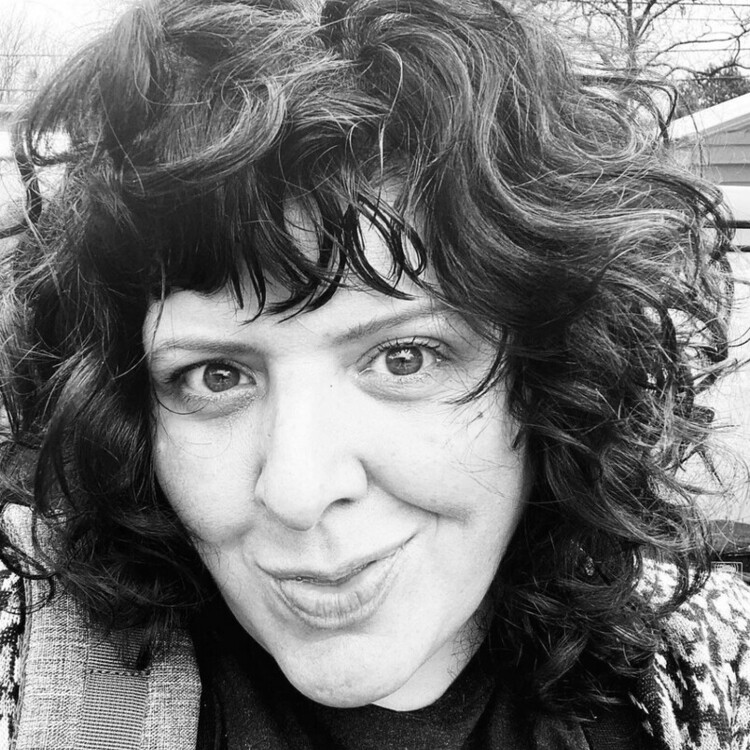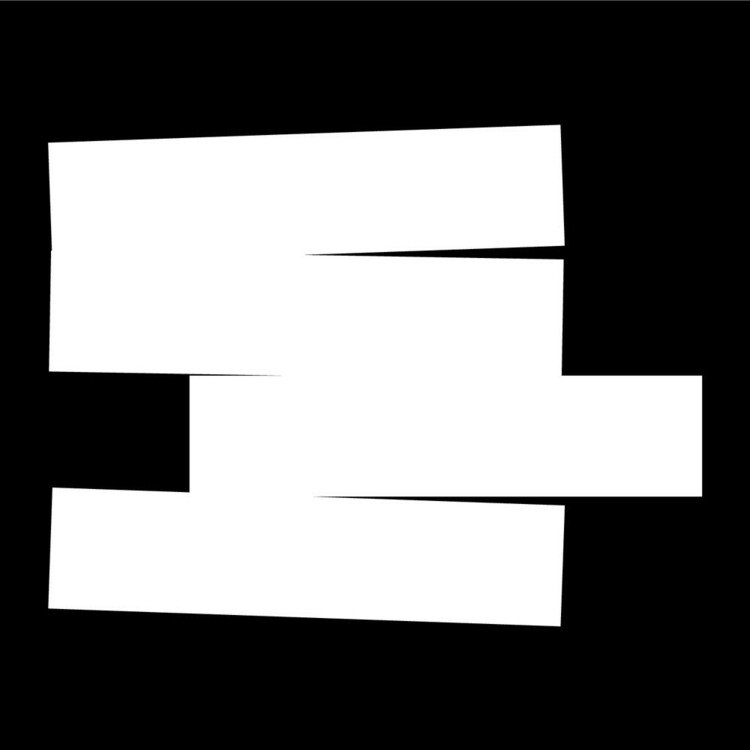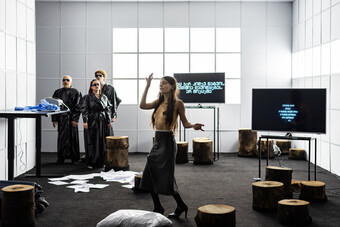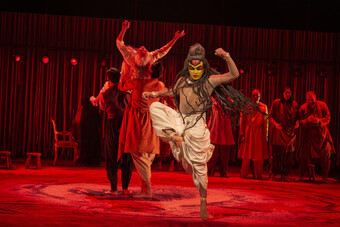[The Prelude… ish.]
Fusebox Festival in Austin, Texas, has been imagining a new kind of performance festival. In fact, we’ve spent most of every day of the past three years imagining this future festival, and now this future will finally arrive in October 2021 in the form of the Live in America Festival, hosted by our partners, the Momentary in Bentonville, Arkansas. Now that I have written the introductory sentence, let me be frank. This is not an inspirational-dreamy essay about a future twenty years from now in which festivals solve humankind’s problems via the arts cause I only have the capacity to breathe life into a few-months-future down the road. The future costs energy in the present. I am already damn tired from the future. Also, be warned that in part this becomes a very practical essay. In a few months, I need to house/pay/accommodate/hug/welcome/host/feed three hundred plus artists at the aforementioned festival, so I am living my best logistical-practical-mindset realness right now. Because this mindset must continue every day until this particular future shifts into the “reflect upon the past in your grant report” part of its life cycle, I recently gave Future a strong talking-to about its propensity for figuratively languaged, far-off landscapes. All this nonsense to say, for at least the past year, the future has been a structurally minded labor of the everyday.
To avoid implying that futures depend upon a solo individual envisioning their way into the fall of the white, capitalist patriarchy and then into the dawn of a collaboratively minded, horizontally organized, equity-, diversity-, and inclusion-rich reality, I have invited some of my collaborators to think with me in this essay. I never think alone. I think with what my parents taught me on the farm. I think with my teachers and my students. I think with my buddies in the backyard over dinner. I think inside of laughter. Almost every day of planning Live in America, I think alongside a host of collaborators—in the case of this essay collaborators include Justin Favela, Ty Defoe, Ron Berry, and Leyya Tawil. Together we think about how to gathers artists and thinkers from eight communities across America’s cultural landscape to share and celebrate the power of their communities in performance; communities include Las Vegas, Nevada; Ciudad Juárez, Mexico-El Paso, Texas border region; Northwest Arkansas; New Orleans, Louisiana; Sumter County, Alabama; San Juan, Puerto Rico; Detroit, Michigan; the Pueblo, Diné, Hopi, and Apache Nations of Albuquerque, New Mexico, in partnership with Indigenous peoples from across Turtle Island. It terrifies me to think alone about this immediate festival future, a future that must be filled with the purposeful care of so many distinct communities. But maybe the action that fear inspires is a saving grace? Maybe the action is to share fear and to move through it with communal care, collaboration, and laughter?
[A Throat-Clear as We Make a Hard Transition into Systems.]
At Live in America, each day we wrestle with and are continually transforming the ethics guiding our own operational practices for building partnerships with the underserved communities who create our festival. (We do not wait for future strategic planning to determine these practices.) And, like so many others, we are traversing the everyday-down-dirty-slog of contemplating field transformation and communal gathering during the stillness and isolation of a pandemic. As we are thinking about the immediate future of live performance, we are learning that we need to check our first impulses, rethink, let go, scrap that idea and that one too, commune, and, most importantly, we need to own up to and wrestle with the always present-past each and every day molding how we envision the future. In wrestling with the present-past, we are not advocating for the “change takes time” approach to the future; instead, we are acknowledging that addressing the future is an everyday series of nonlinear, often iterative undertakings. In our collective experience, thinking about the future as a shiny exercise—
TY: Shine has existed since time immortal, since mica in stones, our ancestors.
—uncoupled from present realities can lead to the reproduction of the same economic, social, and operational systems in which we already exist as art makers. In the United States, this means systems largely grounded in the dynamics of colonization and white supremacy. But what happens if we all consider the future as everyday work, not a monthly brainstorming meeting? Everyday work towards the future demands everyday systemic analysis. And systemic analysis, that’s dirty business. It almost always calls for an overhaul of routinized budgets and operational habits, and it can be bruising to one’s own ego, that is if you’re lucky enough to have the privilege of an art-world ego.
The future costs energy in the present. I am already damn tired from the future.
RON: Is it weird that we tend to think about budgets as separate from our artistic vision and programs? Like the business part of the work is over there and works in this one way, and then the artistic part of our work lives over here and that’s what we really value. Kind of fun to think about budgets as part of our artistic process.
CARRA: Yeah! Plus, who wants to be alone with a budget? Share. Make your day better by making others consider your budget.
TY: Sharing is caring.
By virtue of their very existence, systems are a product of time, so it takes everyday work to reshape and rethink them. And the future we dream about yells back at us, telling us to work every day, every damn day—
JUSTIN: No matter how exhausted we are! (Remember to stay hydrated.)
—to tactically remodel systems to serve those who don’t already sit at the center of power. Checking impulses, letting go, scrapping ideas, communing. Future every day. And to future every day involves building a good deal of trust.
[Cue the Fart Sound.]
Lest we become too vainglorious inside our systemic analysis of future potentialities, a lot of systemic change can be embraced via the humble fart joke. Joy, play, and laughter can help collaborators unlock new thoughts and feelings about the future, and opening up collaborative process to emotion and relational labor creates more capacity to take better care of one another. Over our three years of planning, we’ve taken long walks with collaborators. Eaten so many meals together. Listened to stories about the creatures that live in the bayou.
RON: Where would you say the absolute creepiest creatures live? If you had to choose. The bayou? The woods? Bottom of the ocean? Somewhere else??
CARRA: I would say swampy woods—offers both wet and dry habitats. And they see you but you can’t see them.
JUSTIN: I just spent way too long Googling “swamp vs marsh vs bog.” I’m also going with swampy woods based on my terrifying trip to the Everglades.
We’ve gambled. Talked about the glories of bingo and Seléna. We shook our heads at the number of fart jokes embedded inside a communally crafted document. Through all this joy and play and laughter, a blatantly messy and affective methodology for learning about one another increased our heart swell. The future of performance needs more hearts just big-ole-swollen with the love and care and hope and dreams and anxieties artists hold for one another.
[CARRA: A note on Leyya’s comment below. She offered these thoughts via text message during May of 2021 when she was daily watching her Palestinian community’s tragedy unfold in Gaza. She asked that I include her text in the essay wherever I thought appropriate. This moment felt right.]
LEYYA: I’m so sorry—I really can’t make words—I’ve been staring at the document and trying to have a conversation with it... Reading the words “future” and “art” at the same time, reading the words “ethics,” “transformation,” “laughter,” reading the word “HOME.” Actually I don’t even know if I read the word “home”—I think I just FEEL the word “home.” And now I’m weeping—but still strong—because the solidarity that starts somewhere (here? in art? in the streets? in the face of brutality?) is present in Live in America. And I want to chime into the writing, but I can’t. But I am grateful for the solidarity and listening and linking arms that is EMBEDDED in this project... Here’s to making NEW STREAMS of JUSTICE, by any means necessary.
Through care, through wrangling with the affective, we can more effectively mold the systems guiding our present-past-future.












Comments
The article is just the start of the conversation—we want to know what you think about this subject, too! HowlRound is a space for knowledge-sharing, and we welcome spirited, thoughtful, and on-topic dialogue. Find our full comments policy here